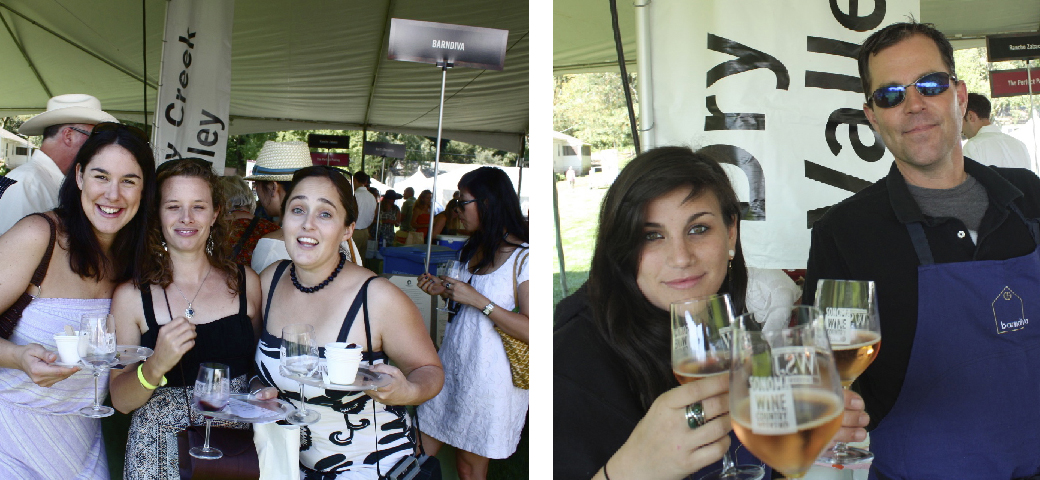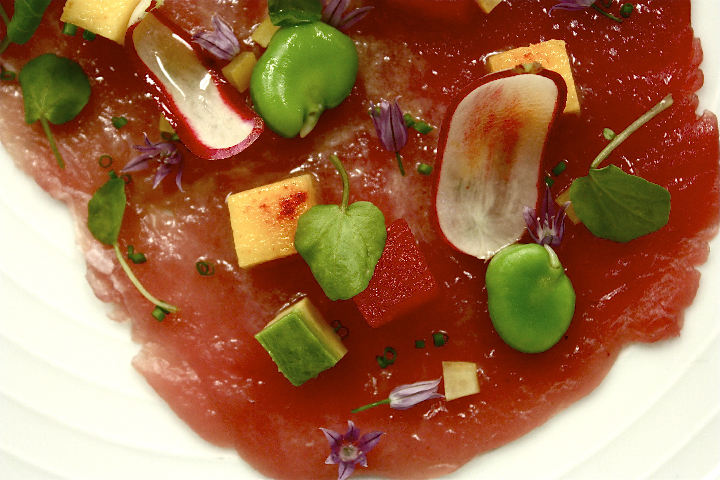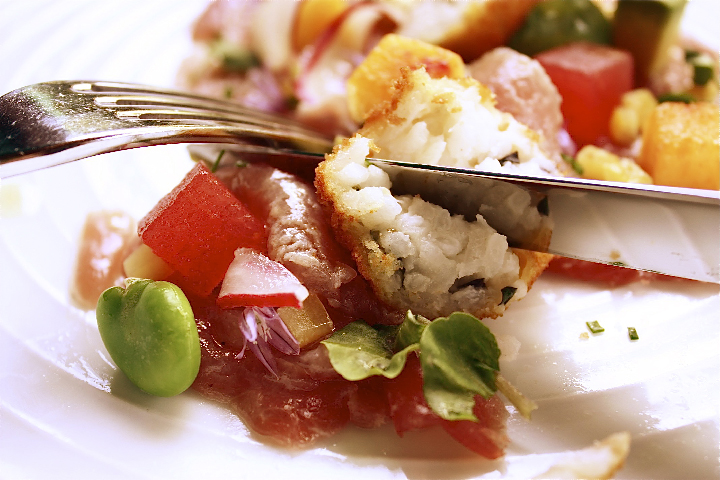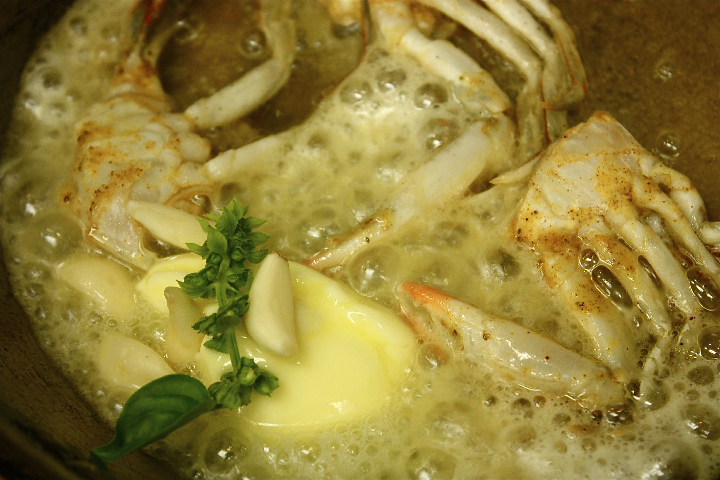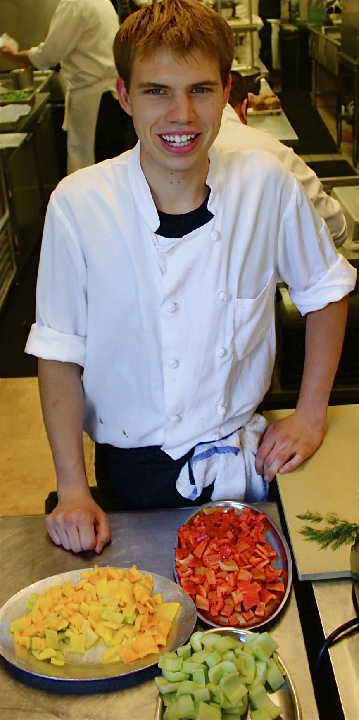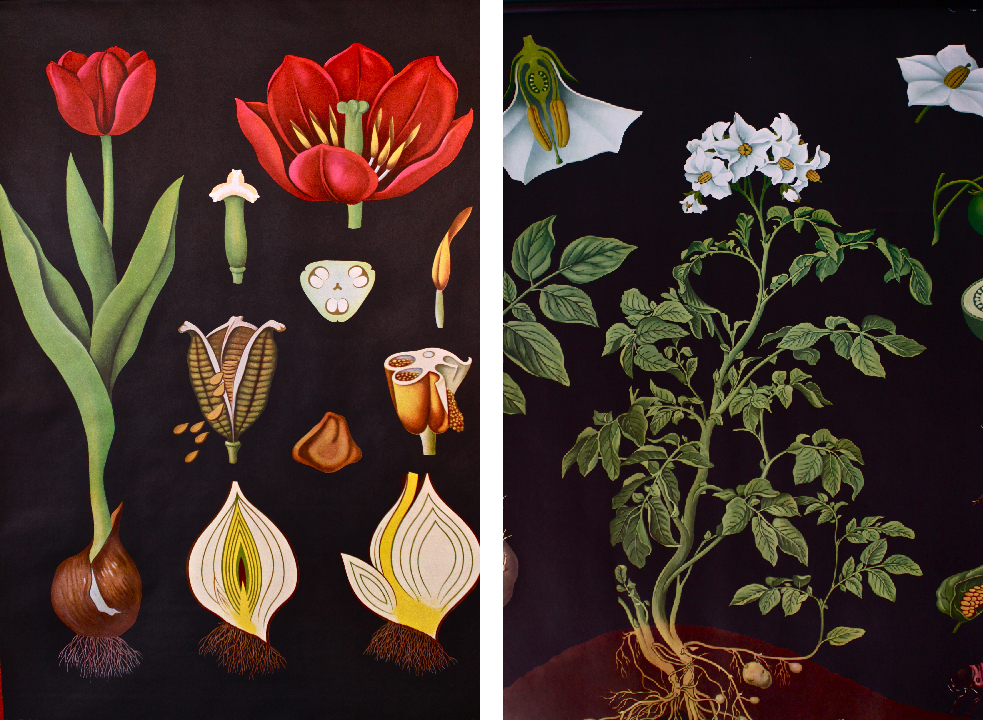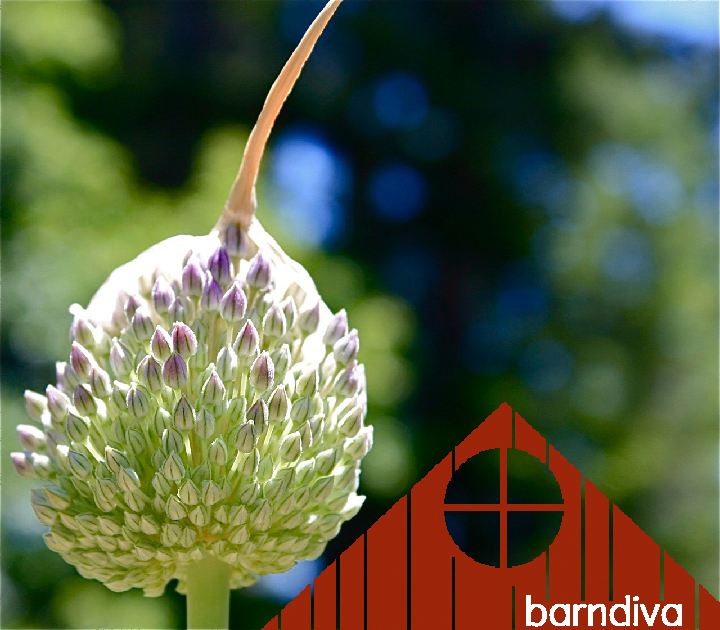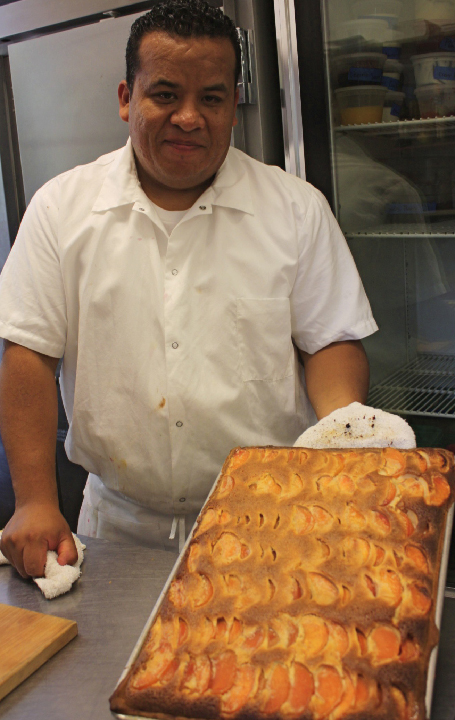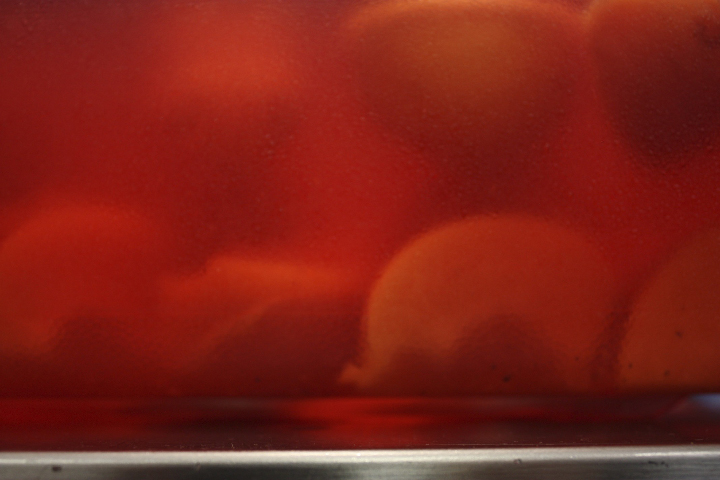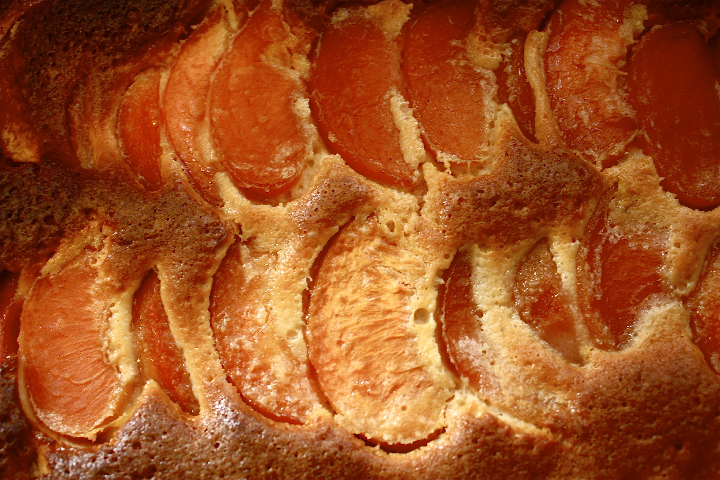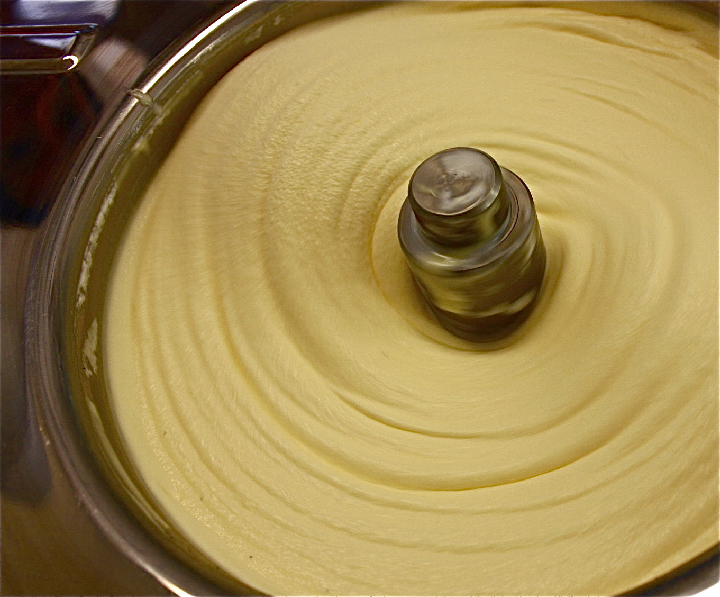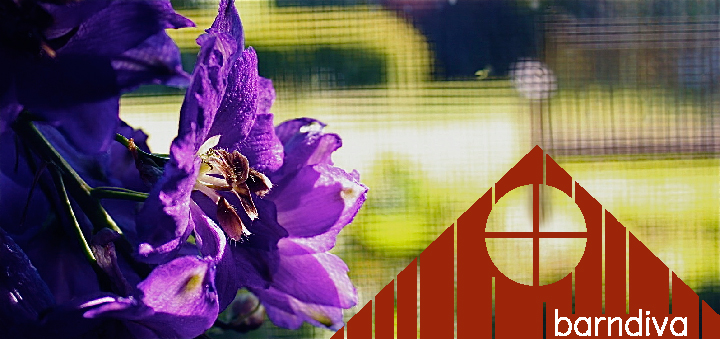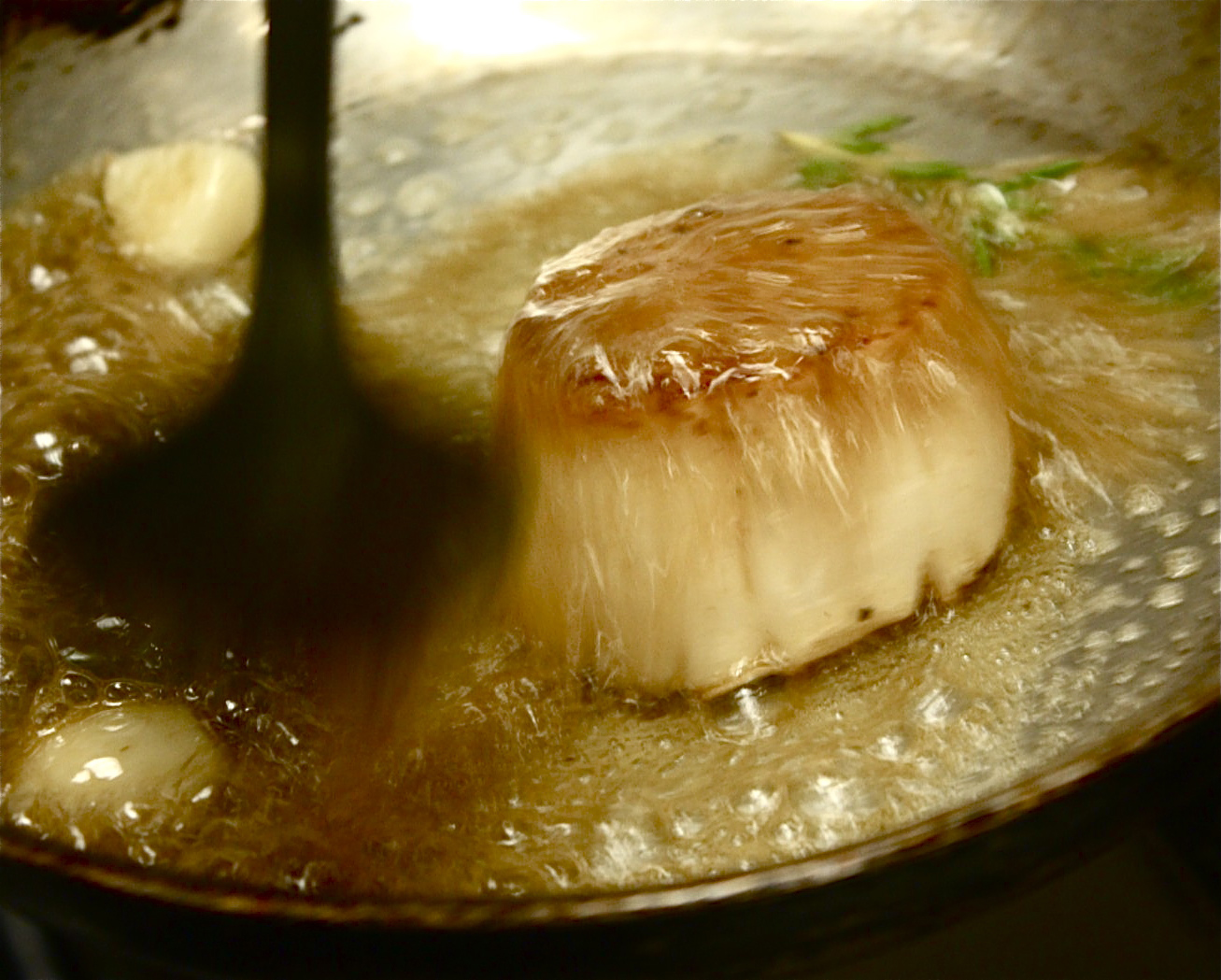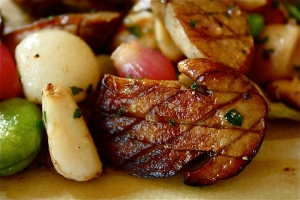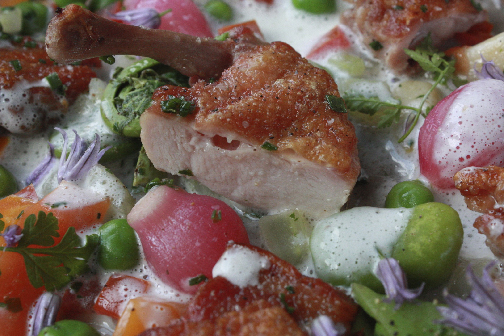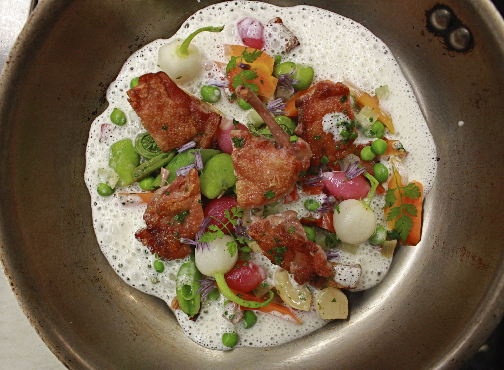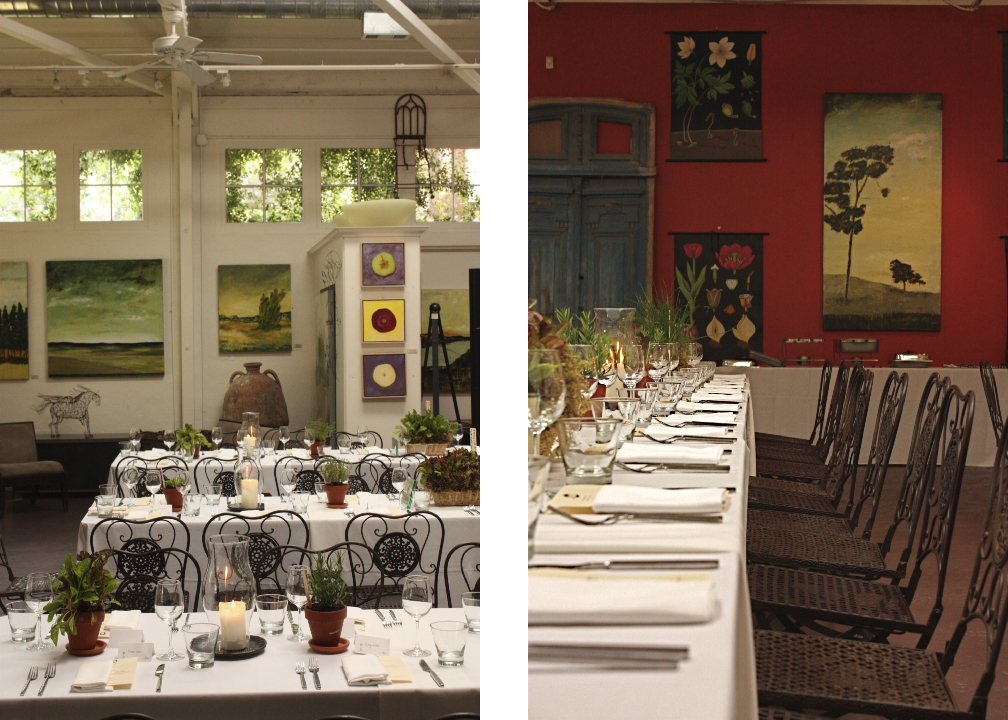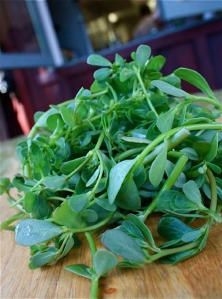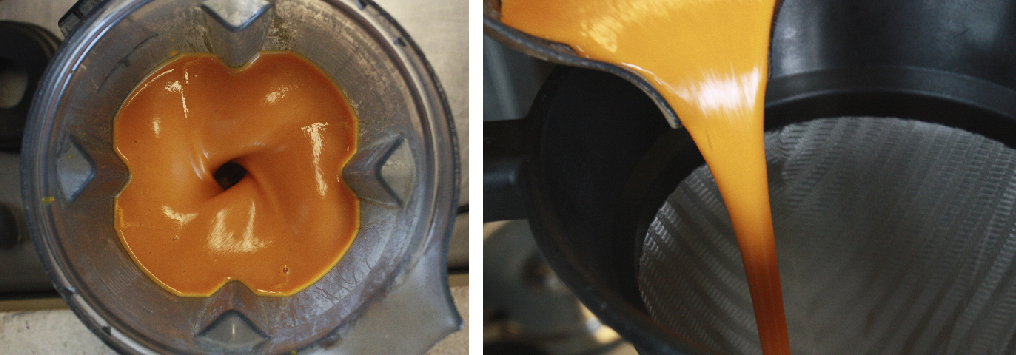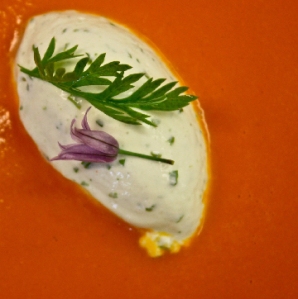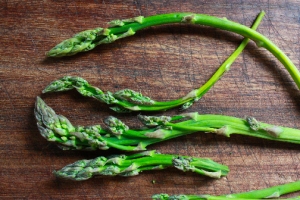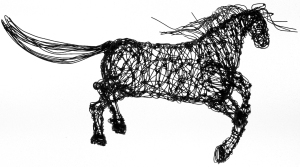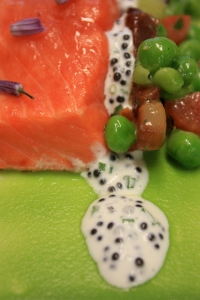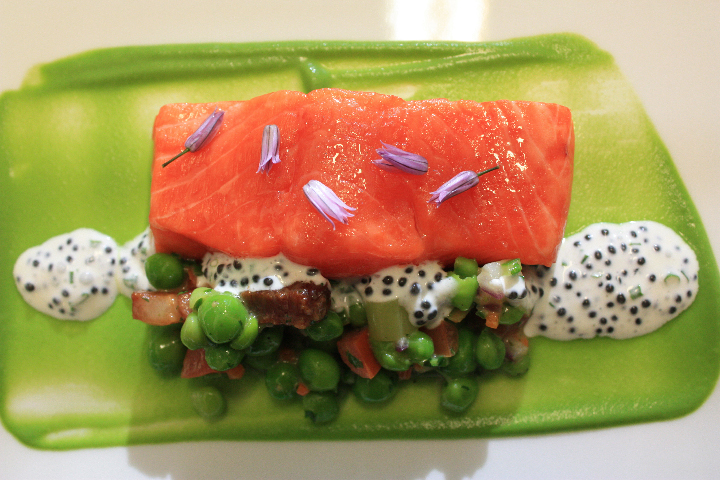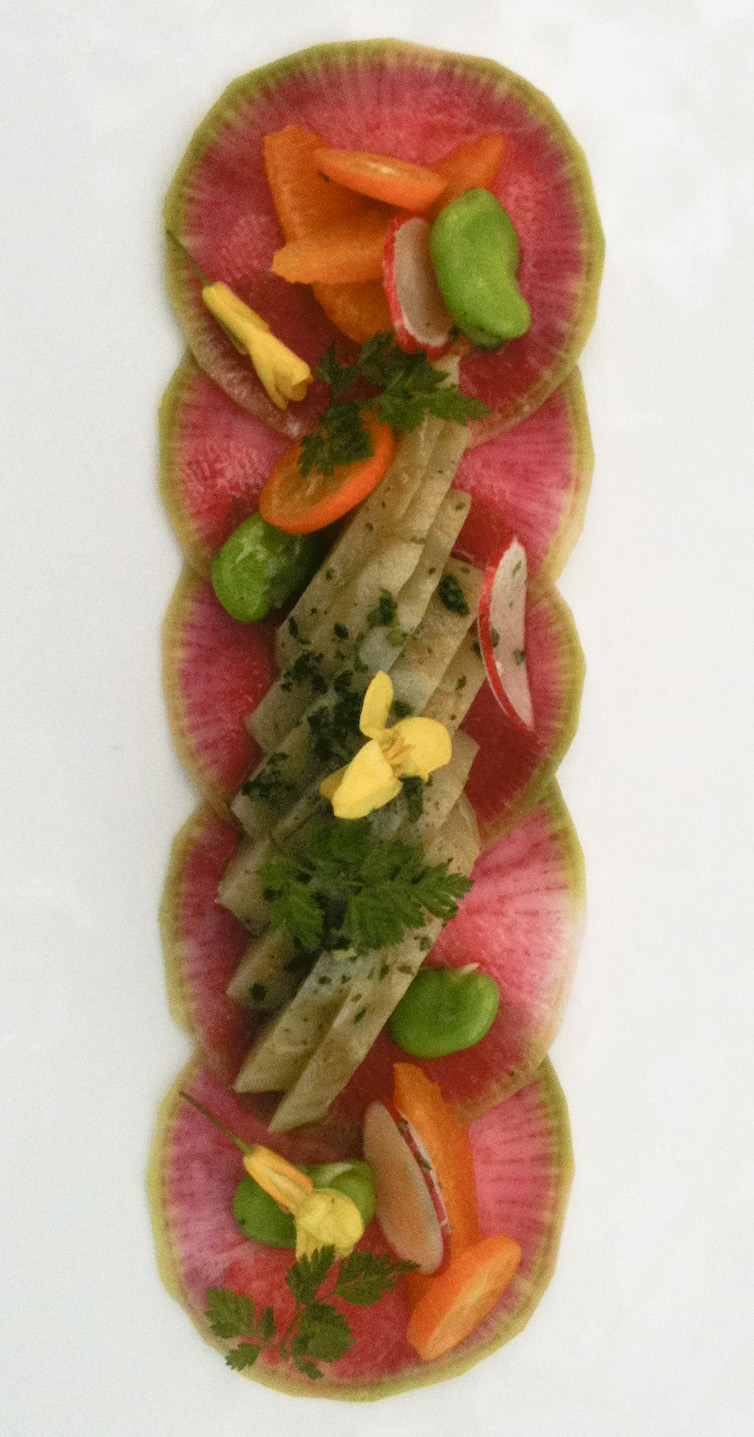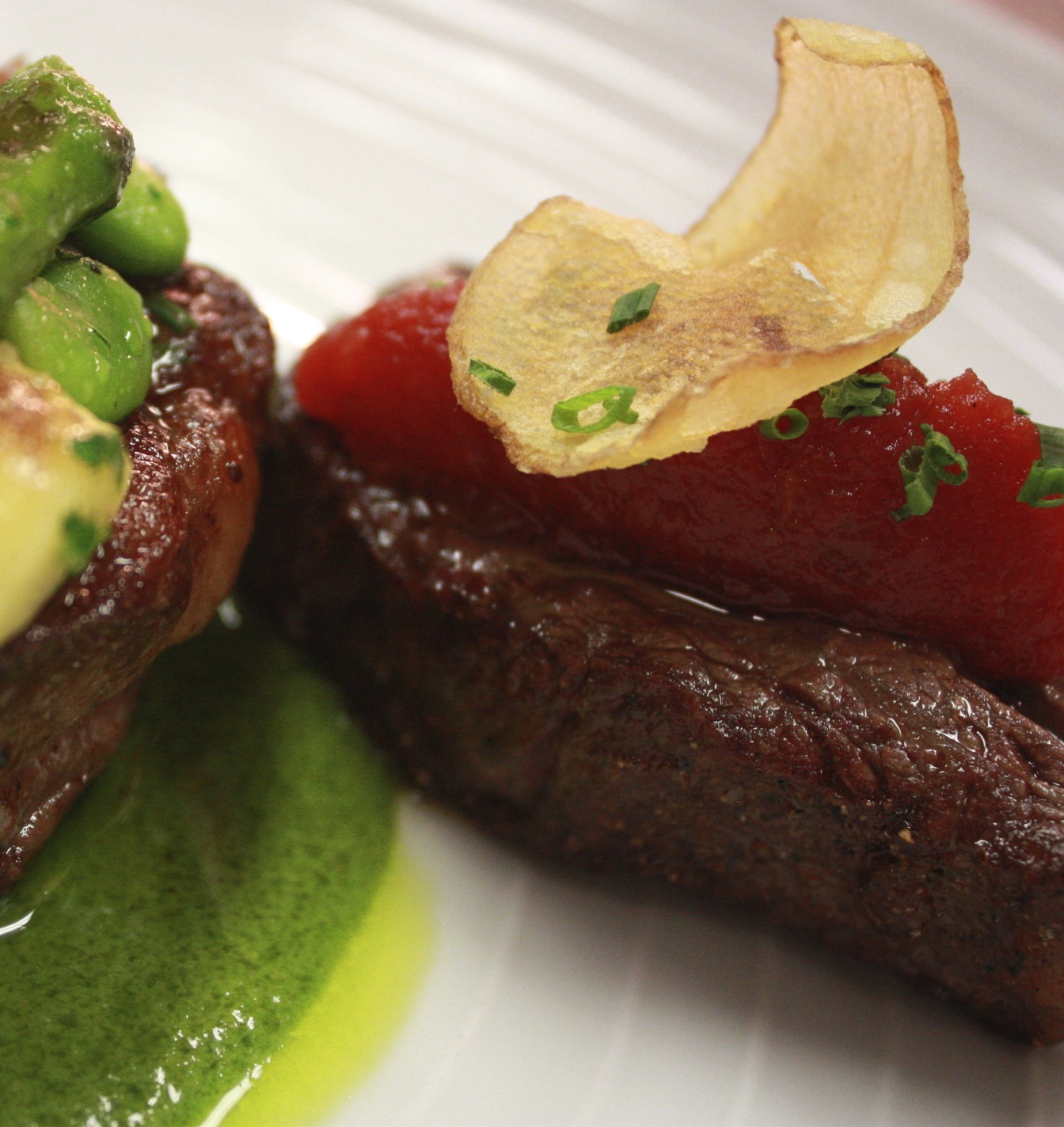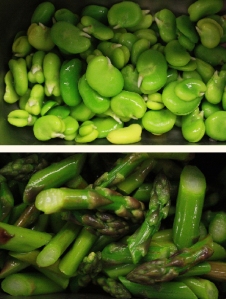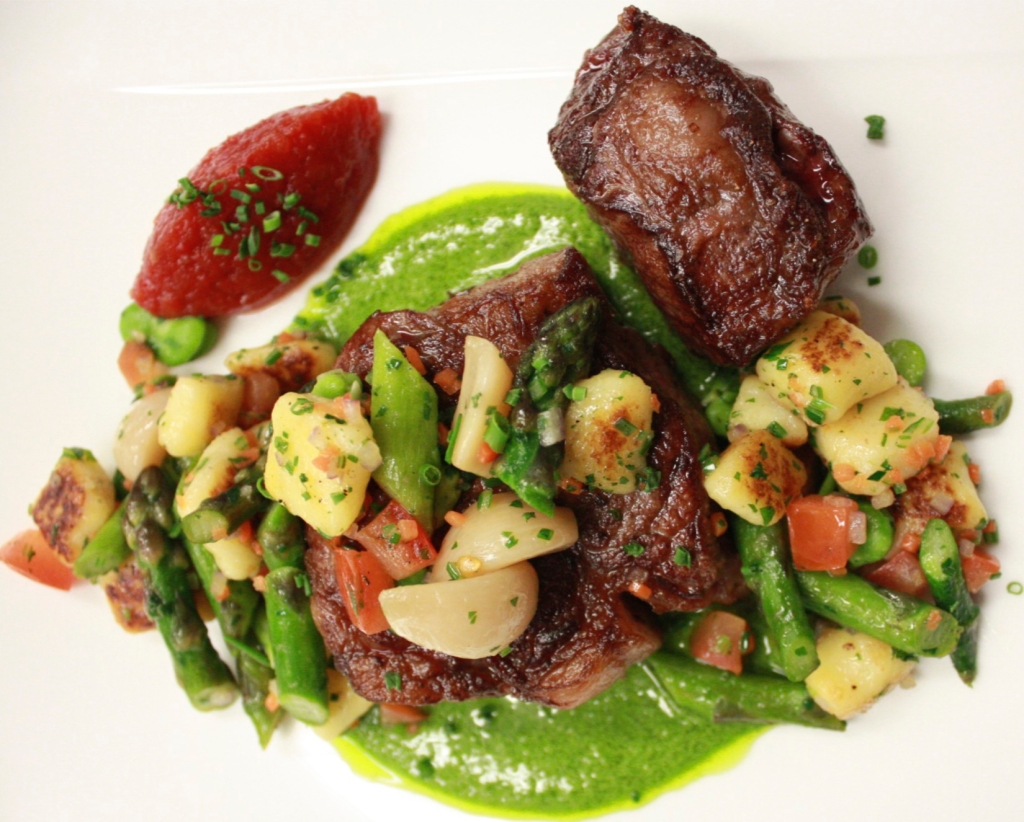Dish of the Week
La Garniture
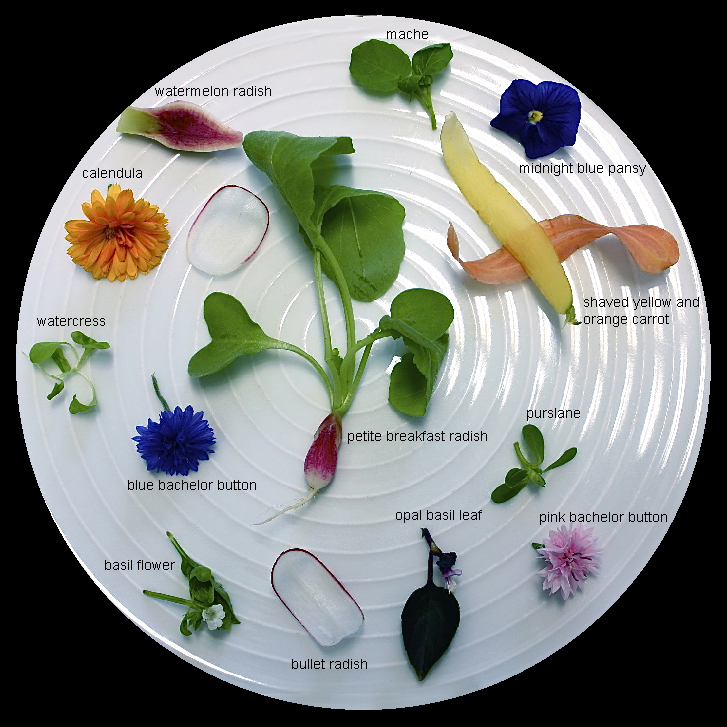 We’ve come a long way since the days when garnishing a dish meant little more than throwing a bit of commercial parsley and a few superfluous vegetables on the plate, that quickly got pushed to one side. These days thoughtful chefs like Ryan have transformed our very notion of garnish, expanding the variety, colors and textures of the things they reach for in those last moments before a dish heads out to the dining room. To my mind, even the word is moribund ~ garnish has the potential to do a hell of a lot more than decorate a dish like a few accent pillows. They are the subtle but dramatic finishing pieces to a complex flavor puzzle a chef begins to fit together with initial conception of the dish.
We’ve come a long way since the days when garnishing a dish meant little more than throwing a bit of commercial parsley and a few superfluous vegetables on the plate, that quickly got pushed to one side. These days thoughtful chefs like Ryan have transformed our very notion of garnish, expanding the variety, colors and textures of the things they reach for in those last moments before a dish heads out to the dining room. To my mind, even the word is moribund ~ garnish has the potential to do a hell of a lot more than decorate a dish like a few accent pillows. They are the subtle but dramatic finishing pieces to a complex flavor puzzle a chef begins to fit together with initial conception of the dish.
 Consider the steps: raw ingredients are rubbed, cured, infused, marinated and seasoned before the cooking process bastes, sautés, caramelizes, bakes, flambés, glazes, braises, grills, barbeques or smokes in yet more flavors. As food is plated the element that arguably demands the most finesse, (and in fine dining restaurants has its very own chef ) the final sauce, is added. Only after all these steps are completed does a chef reach for final finishing flavors which, if he isn't careful, can misrepresent or throw the complexity of the entire dish out the window. When I asked what flavors and textures he might look for in a garnish Ryan reeled off, “sharp, sweet, tart, viscous, buttery, floral, creamy, caramel, crunchy, earthy, herbal” adding he includes vinaigrettes as well.
Consider the steps: raw ingredients are rubbed, cured, infused, marinated and seasoned before the cooking process bastes, sautés, caramelizes, bakes, flambés, glazes, braises, grills, barbeques or smokes in yet more flavors. As food is plated the element that arguably demands the most finesse, (and in fine dining restaurants has its very own chef ) the final sauce, is added. Only after all these steps are completed does a chef reach for final finishing flavors which, if he isn't careful, can misrepresent or throw the complexity of the entire dish out the window. When I asked what flavors and textures he might look for in a garnish Ryan reeled off, “sharp, sweet, tart, viscous, buttery, floral, creamy, caramel, crunchy, earthy, herbal” adding he includes vinaigrettes as well.
 If you’ve dined at the Barn over the past few weeks you will recognize most of the elements photographed here which were used to garnish our plates one day last week; chances are if you come in next week they will have been replaced. For restaurants like ours that tout their farm to table pedigree, garniture offers a not-to-be-missed opportunity to showcase what’s local, seasonal and freshest. Towards this end we devote three raised beds here at the Barn just for finishing. In addition to these edible flowers and herbs which Chef uses raw or infuses in oil and a range of vinegars, our farmer partners grow a variety of tiny vegetables and greens he may pickle or lightly dress. And let's not forget root vegetables which can be deep fried for a sprinkling of chips...once you see the potential of garnish, the list just keeps on growing.
If you’ve dined at the Barn over the past few weeks you will recognize most of the elements photographed here which were used to garnish our plates one day last week; chances are if you come in next week they will have been replaced. For restaurants like ours that tout their farm to table pedigree, garniture offers a not-to-be-missed opportunity to showcase what’s local, seasonal and freshest. Towards this end we devote three raised beds here at the Barn just for finishing. In addition to these edible flowers and herbs which Chef uses raw or infuses in oil and a range of vinegars, our farmer partners grow a variety of tiny vegetables and greens he may pickle or lightly dress. And let's not forget root vegetables which can be deep fried for a sprinkling of chips...once you see the potential of garnish, the list just keeps on growing.
Grown or foraged or bought, finishing flavors are an essential, if ephemeral, piece to dining you owe it to yourself to explore. Whatever you call them.

This Week!
 Expectations are running high for this week's first National Heirloom Expo ~ with good reason. The time is right for a truly meaningful countywide event with a focus on seeds, farming and superlative products. The Expo starts Tuesday and runs through Thursday at the Santa Rosa Fairgrounds. Barndiva will be participating in the chef demonstrations (Ryan will be there today at 2, as well as Alex from Mix Gardens), and there will be scintillating panel discussions with food savants from around the country, in addition to keynotes speakers including Alice Waters and Dr. Vandana Shiva. If you've never heard Dr. Shiva (chances are you've never even heard OF her) don't miss this opportunity to experience this Nobel worthy woman who speaks truth to power about the future of food.
Expectations are running high for this week's first National Heirloom Expo ~ with good reason. The time is right for a truly meaningful countywide event with a focus on seeds, farming and superlative products. The Expo starts Tuesday and runs through Thursday at the Santa Rosa Fairgrounds. Barndiva will be participating in the chef demonstrations (Ryan will be there today at 2, as well as Alex from Mix Gardens), and there will be scintillating panel discussions with food savants from around the country, in addition to keynotes speakers including Alice Waters and Dr. Vandana Shiva. If you've never heard Dr. Shiva (chances are you've never even heard OF her) don't miss this opportunity to experience this Nobel worthy woman who speaks truth to power about the future of food.
Without a doubt one of the more interesting groups coming to the Expo are the folks from Native Seed/SEARCH, a seed saving educational non-profit that has been going strong in Arizona for over two decades. Native Seed's Bill McDorman will be speaking on Tuesday at 3, directly after Ryan's demo, and will also participate in an important panel Thursday called Seeds of Sustainability.
 On Friday morning Studio Barndiva will host a benefit for the Native Seed/SEARCH organization with an incredible brunch starting at 11 using Native Seed products. Our pastry chef Octavio will be making muffins with their Senoran White Wheat, while Ryan and the gang will serve up our infamous Huevos Rancheros with Early Bird Eggs, heirloom salsa and Native Seed Tepary Beans. Bloody Marys, made with our tomatoes and their rare Native Seed spices will (quite literally) kick off the meal, after which there will be a chance to talk with Bill and his dynamic wife Belle Starr and many other seedsmen and women who were at the Expo and are coming for a last chance to compare notes. This is a not-to-be-missed event folks, with a great meal, in support of a wonderful organization. It just doesn't get any better.
On Friday morning Studio Barndiva will host a benefit for the Native Seed/SEARCH organization with an incredible brunch starting at 11 using Native Seed products. Our pastry chef Octavio will be making muffins with their Senoran White Wheat, while Ryan and the gang will serve up our infamous Huevos Rancheros with Early Bird Eggs, heirloom salsa and Native Seed Tepary Beans. Bloody Marys, made with our tomatoes and their rare Native Seed spices will (quite literally) kick off the meal, after which there will be a chance to talk with Bill and his dynamic wife Belle Starr and many other seedsmen and women who were at the Expo and are coming for a last chance to compare notes. This is a not-to-be-missed event folks, with a great meal, in support of a wonderful organization. It just doesn't get any better.
To book a place at the table, call Barndiva at 707 431 0100.
See you there! See you here! Details below.
Sonoma Wine Country Weekend
We sent two of our biggest diva's ~ Isabel and Eric ~ to Taste of Sonoma a week ago to sing our song to a sold out crowd of 3,000. Good thing that in addition to our compressed watermelon + lemon verbena we also served up Barndiva Farm's Heirloom green figs and Gravenstein Apples ~ these terrior hunters were hungry, and not just for information. Taste is a great event ~ at the gorgeous MacMurray Ranch ~ in which to get a comprehensive overview of the wines produced across the county. We were in the Dry Creek Valley tent, but we couldn't help noticing while visiting friends in the other tents that there was decidedly less food this year. What's up, Chefs? We are busy as all get out this time of year but we made the time and are really glad we did. Not counting Pigs n' Pinot ~ which is one varietal and Healdsburg centric ~ Honor Comfort and the gang throw the most convivial wine event of the summer.
All text Jil Hales. All photos Jil Hales (unless otherwise noted)






